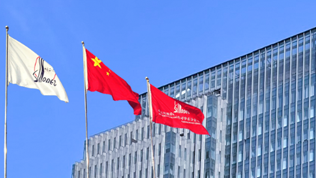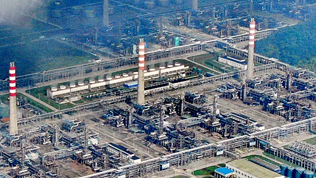Liquefied petroleum gas (LPG) is one of the petrochemical products, which refers to the petroleum gas that can be liquefied or stored and transported in liquid phase under appropriate ambient temperature and pressure. LPG mainly comes from the by-product gas from various devices in petroleum processing, and some comes from natural gas (including oil-associated gas). Obtained from refinery gas, LPG is mainly composed of propane, propylene, butane, butene, a small amount of pentane, pentene and traces of sulfur compound impurities. The liquefied gas obtained from natural gas (including oil-associated gas) basically doesn’t contain olefins.
Features
The main quality control indexes of LPG are components, copper strip corrosion, residue and sulfur content, and sometimes diene content. LPG is a flammable substance which can form an explosive compound when mixed with air. Once it is exposed to sparks or high heat, it may explode or burn.
Compared with other fuels, LPG has the following advantages:
1.Less pollution. LPG is a hydrocarbon composed of propane and butane, which can be fully burned without producing any dust. The application of LPG in modern cities can greatly reduce the pollution caused by using coal and firewood as fuel in the past.
2.High calorific value. The calorific value of LPG is twice that of coal with same weight, and the calorific value of liquid is 45 185 ~ 45 980 kJ/kg.
3.Easy to transport. LPG is gas under normal temperature and pressure, and can be liquefied under a certain pressure or if it is frozen to a certain temperature. It can be transported by tank on train (or automobile) and LPG ship.
4.Stable pressure. The pipeline pressure of LPG is the same as that of user’s cooker, which makes it easy to use.
5.Simple storage and flexible supply. Compared with the production, storage and supply of coal gas, the storage equipment of LPG is relatively simple. LPG can be stored in tanks in gas stations, gas cylinders in users’ houses, or distribution stations and pipe networks to make it possible to supply gas by pipeline.
Therefore, LPG is widely used as industrial, commercial and household fuels. At the same time, its chemical composition determines that it is also a useful chemical raw material, so LPG is also widely used in the production of various chemical products.
Processing technology
In refinery production, a certain number of gaseous hydrocarbons will be produced in each device, mainly those where decomposition reaction happens, such as catalytic cracking, hydrocracking, delayed coking, etc. The main components of catalytic cracking gas are as follows (volume fraction): propane (6-22%), propylene (27-49%), n-butane (3-20%), isobutane (3.5-30%), isobutene (2.5-20%), n-butene (0-21%), and hydrocarbons with more than 5 carbon atoms (0-2.8%). The main components of hydrocracking gas are as follows (volume fraction): propane (17-40%), n-butane (11-48%), isobutane (20-70%), and hydrocarbons with more than 5 carbon atoms (3-15%). The yield and composition of LPG produced by refinery equipment vary with the nature of raw materials processed by the equipment, production scheme, technological conditions and the model of catalyst. It includes C2 - C4 alkanes, C2 - C4 alkenes, a small amount of C5 hydrocarbons, a small amount of H2S, mercaptan and other impurities, and possibly traces of diene.
Easy to be liquefied, these hydrocarbons are compressed to 1/250 to 1/350 of the original volume and stored in pressure-resistant steel tanks. When in use, the inflammable hydrocarbon gas will enter the burner through the pipeline after the valve of the LPG tank is unscrewed. Light blue flame is formed after ignition, and a large amount of heat is generated during combustion process.
Uses
With the development of petrochemical industry, LPG, as a basic chemical raw material and a new type of fuel, has attracted more and more attention. In chemical production, LPG can be separated into ethylene, propylene, butene and butadiene, which are used to produce synthetic resin, synthetic rubber, synthetic fiber, medicine, explosive, dyes and other products. LPG features high calorific value and easy use, producing no smoke or carbon residue, so it has been widely used in our everyday life, such as household fuel. In addition, LPG is also used for metal cutting, baking of agricultural produce and baking in industrial kilns.
Non-ferrous metal metallurgy
Nonferrous metal metallurgy requires stable calorific value of fuel, no combustion products and no pollution, and LPG meets these requirements. After being heated and gasified, LPG can be easily introduced into the furnace for combustion, replacing the original gas combustion and reducing the harm caused by sulfur, phosphorus and other impurities.
Baking in kilnh
Government departments put forward that the tasks of China’s energy development in the future are to optimize the energy structure, establish a clean, safe and efficient world-class energy subply system, and establish a mechanism promoting the development of energy technology. To meet this requirement, many industrial kilns and furnaces started to use LPG as fuel, such as ceramic tile baking and sheet rolling, which not only reduces air pollution, but also greatly improves product quality.
Automotive fuel
At present, about 70% of urban air pollution comes from automobile exhaust emissions. To solve this problem, China’s large- and medium-sized cities have successively built gas stations since the end of the 20th century, using LPG as automotive fuel instead of gasoline. The change of fuel has greatly improved urban air quality, which represents another direction of LPG development.
Household fuel
Supplied in bottles, LPG for household use is connected to the cooker by a hose, which is easy to use.

 Address
Address Post code
Post code Tel
Tel












 川公網安備11000132213211
川公網安備11000132213211